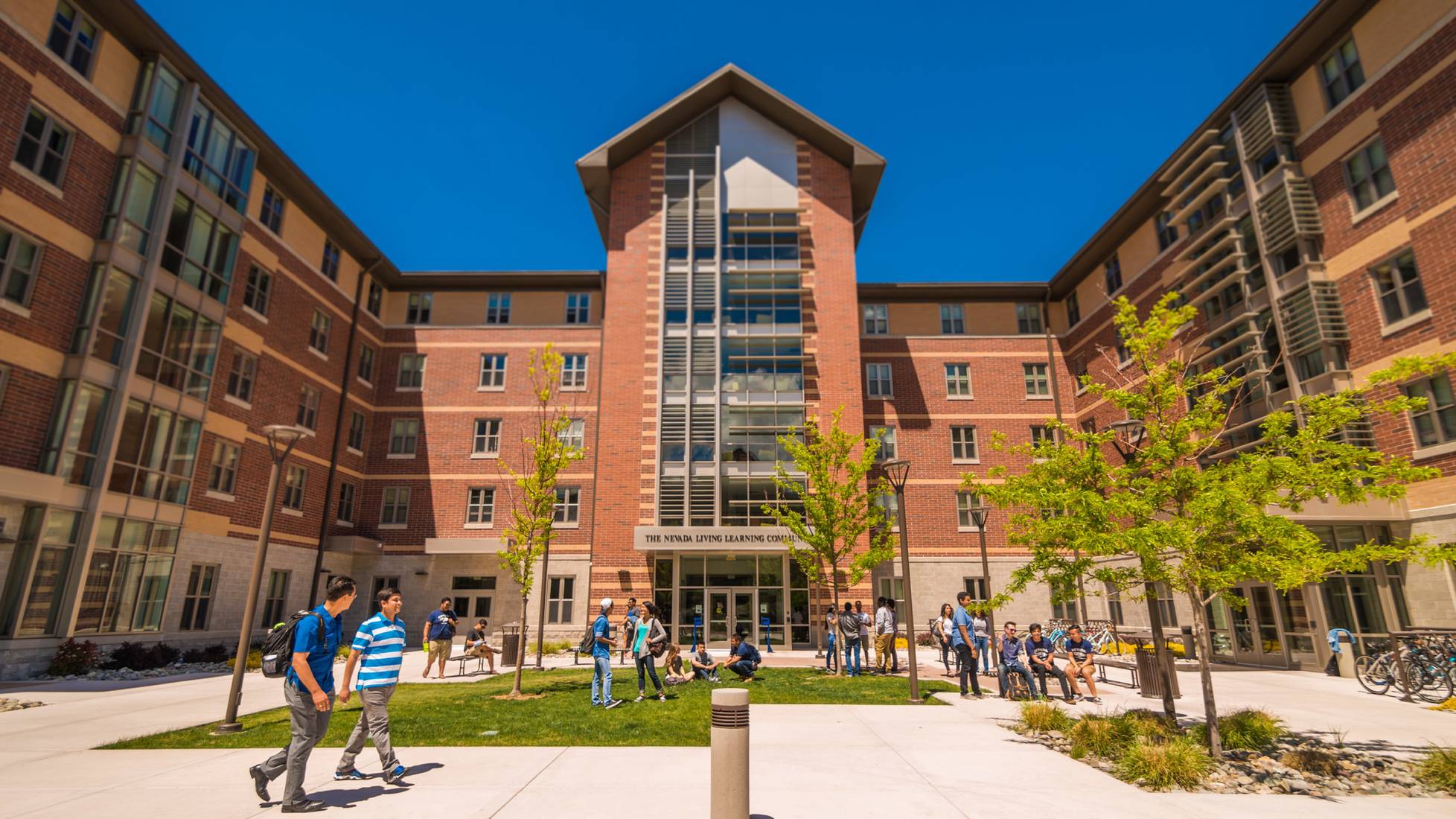
The University of Nevada, Las Vegas (UNLV) is a prominent public research university located in Paradise, Las Vegas. Established in 1957 as the Southern Division of the University of Nevada, it gained independent university status in 1965. UNLV has since evolved into a comprehensive institution offering a diverse range of undergraduate and graduate programs across various disciplines.
In 1965, the institution gained independent status and was officially named the University of Nevada, Las Vegas. UNLV continued to expand both in terms of academic programs and physical infrastructure throughout the subsequent decades. The campus underwent significant development, with the construction of new facilities and the establishment of various colleges and schools, catering to a broad spectrum of academic disciplines.
Situated in a city known for its vibrant entertainment and hospitality industries, UNLV has become a hub for education and innovation. The campus spans over 350 acres and features modern facilities, including state-of-the-art research centers, libraries, and recreational spaces. The university’s commitment to fostering academic excellence is evident in its faculty, many of whom are renowned scholars and experts in their respective fields.
UNLV is particularly recognized for its research contributions, with emphasis on areas such as hospitality, gaming, and the sciences. The university’s proximity to the renowned Las Vegas Strip provides students with unique opportunities for internships and real-world experiences in these industries.
The student body at UNLV is diverse, representing a mix of cultures and backgrounds. The university actively promotes inclusivity and multiculturalism, creating a dynamic and enriching learning environment for its students. Additionally, UNLV has a strong emphasis on community engagement, encouraging students to contribute to the local community through various service and outreach programs.
UNLV has played a pivotal role in shaping the educational landscape of Las Vegas and has become a key contributor to the cultural and economic development of the region. Over the years, the university has garnered recognition for its research initiatives, particularly in fields such as hospitality, gaming, and sciences. The growth and achievements of UNLV highlight its commitment to providing accessible, quality education while contributing to the intellectual and economic vitality of the Las Vegas community and beyond.
Paradise, located in Clark County, Nevada, is an unincorporated town adjacent to the city of Las Vegas. The history of Paradise is deeply intertwined with the development and growth of the Las Vegas Valley. In the early 20th century, the area was largely uninhabited desert land. However, with the construction of the Hoover Dam in the 1930s, the population of the region began to increase as workers and their families settled in the area.
On August 20, 1951, county commissioners accepted petitions to create two new towns covering the area of the putative town. Town “A” of Paradise included the areas that lay within a Las Vegas school district, extending from the city limits to a point one mile south, while Town “B” included the areas within the Paradise school district.In 1953, Town A was renamed as Winchester, and Town B became known simply as Paradise.
In 1975, Nevada enacted a law that would have incorporated Paradise (along with Sunrise Manor and Winchester) into the City of Las Vegas.
The real transformation of Paradise occurred in the mid-20th century with the rise of the tourism and entertainment industries in Las Vegas. As the famous Las Vegas Strip began to take shape, stretching along Las Vegas Boulevard South, much of this iconic thoroughfare fell within the boundaries of Paradise. The construction of large-scale resorts, hotels, and casinos in the 1950s and 1960s brought unprecedented growth and economic prosperity to the region.
Paradise has witnessed continuous growth and urbanization, evolving into a diverse community that not only hosts iconic landmarks but also encompasses residential neighborhoods, commercial areas, and essential infrastructure. The presence of McCarran International Airport further solidifies Paradise as a central point for visitors arriving in Las Vegas. The town’s strategic location has played a pivotal role in its development, offering convenient access to major transportation routes.
In recent decades, Paradise has evolved into a diverse and dynamic community, home to a mix of residential neighborhoods, commercial establishments, and world-renowned entertainment complexes. While not an incorporated city, Paradise plays a crucial role in the cultural and economic landscape of the Las Vegas metropolitan area, attracting millions of visitors each year to experience the excitement and allure of the famous Las Vegas Strip.
Paradise, with a desert climate, has hot summers exceeding 100°F (38°C) and mild winters around mid-50s to low 60s°F (13-18°C). Rainfall is minimal, and the region is known for abundant sunshine. The dry conditions and low humidity are characteristic of a desert environment, influencing the outdoor lifestyle. It’s essential to stay hydrated, especially during the hot summer months, as temperatures can be intense.
Unlock your potential with a personalized solution tailored just for you. Request your free quote today and take the first step towards your academic journey.





























Subscribe to Worldwide Scholarship Hub and unlock a world of possibilities as you embark on your educational journey.